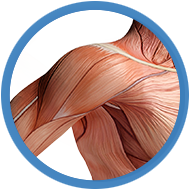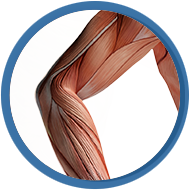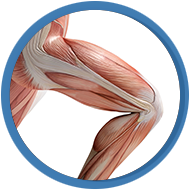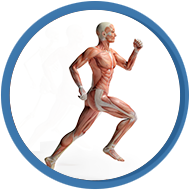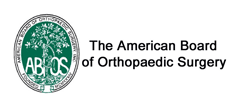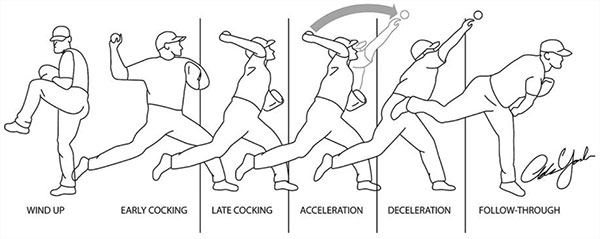
Background
Baseball is one of the most demanding sports on the shoulder and elbow. In order to throw properly without injury, there is a complex interplay between muscle groups of the trunk, upper and lower body. Power is generated from the lower body in contact with the ground and passed along the kinetic chain, which consists of interrelated groups of body segments, connecting joints, the spine and muscles. A substantial amount of force is generated which ultimately passes through the shoulder and elbow during the phases of a baseball throw, from winding up to ball release. Each throwing phase imparts a different set of movements and loads on the upper extremity which can cause a myriad of different problems depending on the specific details involved.
Injury Prevention
Many recommendations have been made for players at the Little League, high school, collegiate, and professional levels. Risk factors for shoulder and elbow injuries in Little League and adolescent players include: age, height, playing for multiple teams, pitch velocity, pitch counts, and arm fatigue. Limiting pitch counts in Little League and high school players may decrease injury rates. There is conflicting evidence regarding the use of pitch counts in college and professional baseball. Optimizing upper, lower body, and trunk strength and endurance may also lower the risk of injury.
Shoulder Injuries
The forces of throwing on the shoulder can cause tearing of the ligamentous structures (capsule), biceps/labrum complex, and the rotator cuff muscle-tendon unit. Generally, most of these problems can be treated with a short period of activity cessation, and a goal-directed rehabilitation plan. The physical therapist or athletic trainer should help progress the rehabilitation plan through three phases. Phase 1 should focus on trunk stabilization, joint motion, and limb flexibility. Phase 2 aims to improve and optimize upper and lower muscle strength. Phase 3 is a sports-specific progression focusing on synchronizing muscle groups and joints to progressively return the athlete back to baseball. When rehabilitative measures fail, imaging techniques such as MRI can help pinpoint specific disrupted tissues. Surgery is occasionally required and can usually be accomplished with the use of minimally invasive shoulder arthroscopy techniques. In general, after surgery, most athletes are able to return to baseball.
Elbow Injuries
Pinching (impingement) can occur in the back and outside of the elbow when the arm is locked out during the ball release part of throwing. This can usually be treated with a three phase rehabilitation progression but will occasionally require elbow arthroscopy to remove pinching structures. Ulnar collateral ligament (UCL) tears remain one of the biggest problems in baseball due to the potential need for surgery and time required to return to sport. Current UCL reconstruction techniques will allow for most athletes to return to play but may take up to 12-18 months for full recovery. UCL repair is gaining in popularity and may allow some athletes to return to play within a shorter time frame.
